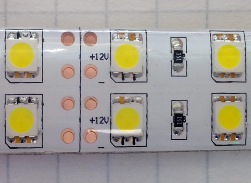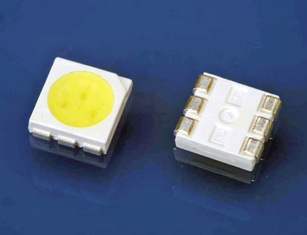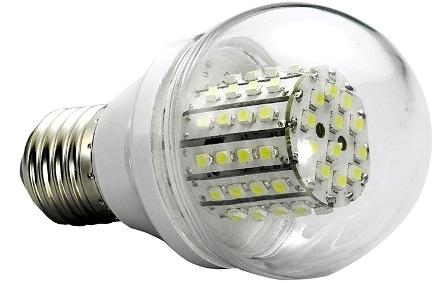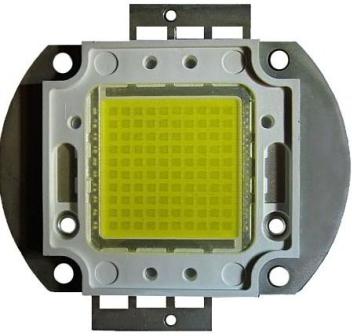Categories: Featured Articles » Sources of light
Number of views: 19356
Comments on the article: 1
SMD LEDs - Surface Mount LEDs
 Every year, LEDs are finding wider application, and can be used in many areas of lighting technology, including lighting of housing and communal services and emergency lighting systems. LEDs are indispensable in all kinds of design projects, including the design of architectural structures, decorative lighting of cars and much more.
Every year, LEDs are finding wider application, and can be used in many areas of lighting technology, including lighting of housing and communal services and emergency lighting systems. LEDs are indispensable in all kinds of design projects, including the design of architectural structures, decorative lighting of cars and much more.
All this is made possible by their clear light, economy and safety. LED luminaires are installed in porches, underpasses, elevators - wherever minimal maintenance and energy saving are required with the proper quality and reliability of lighting equipment.
The power of LEDs increases all the time, their luminous flux increases, and it is not at all surprising that these components in SMD (surface mounted device) performance is now no less, and in recent years - more and more popular than traditional LEDs with a round plastic lens on long legs.
The SMD chip, which has a powerful luminous flux, is convenient in that the LED crystal is as close to the heat sink as possible, and this is extremely difficult to achieve with the case version of the component. The power of SMD LEDs is in the range from 0.01 to 0.2 W, and technologically, from 1 to 3 separate crystals are installed on ceramic substrates.

The design of the SMD LED involves the direct connection of the solder pads of its substrate with the circuit board. The lighting angle of SMD LEDs is wider, and thanks to this feature, assemblies in the form of lamps with standard socket.

The tiny enclosures of SMD LEDs make them just perfect for use in a variety of displays and LED displays. Such elements are easy to mount on boards, they can be combined into rulers and tapes, which are conveniently divided into parts and mounted both in light boxes and outside of decorative structures.
Housings SMD diodes come in different sizes. This expands the range of their application for almost any technical solution.
SMD LED crystals are grown using a standard technology called organometallic epitaxy. The thicknesses of the layers grown in this case are measured and strictly controlled in the range from several tens of angstroms to units of microns. Then, different layers must be doped with impurities, acceptors or donors in order to obtain a pn junction with an abundant concentration of electrons in the n region and holes in the p region.
An important stage of manufacturing is the etching of films, the creation of contacts to the n and p layers, the coating of the terminals with metal films. A film grown on one substrate is cut into several thousand chips, the area of which is usually from 0.06 to 1 square millimeters. After that, LEDs are made of chips.

The crystal is mounted in the housing, then the contact leads are made, and, finally, optical coatings are made to brighten the surface of the radiation output or reflect it. If a white LED is made, then the phosphor is evenly applied. Next, it is necessary to ensure heat removal from the body with the crystal, and to make a plastic dome focusing the light into the desired solid angle. So about half of the cost of the LED are precisely these stages of high technology.

The technology when several SMD LEDs are located on the same substrate is called COB (chip-on-board - a chip on the board). The principle of COB technology is the placement on the board of several crystals at once without cases and ceramic substrates, as well as the coating of these crystals with one common phosphor layer. Due to this, the cost of such a matrix of LEDs is significantly reduced.
Whatever technology the SMD LED is made on, it is mounted on one common substrate. The metal substrate often performs the function of a cooler, and sometimes, if the assembly has significant power, such assembly requires additional cooling, for this an additional radiator is used, and even sometimes a fan.
A large number of low-power SMD LEDs in one lamp makes it possible to obtain high-quality scattered light without the need for special optical systems. All that is needed is a protective glass, the loss of which is only 8%.
Read also on this topic: LED strip application
See also at bgv.electricianexp.com
:

